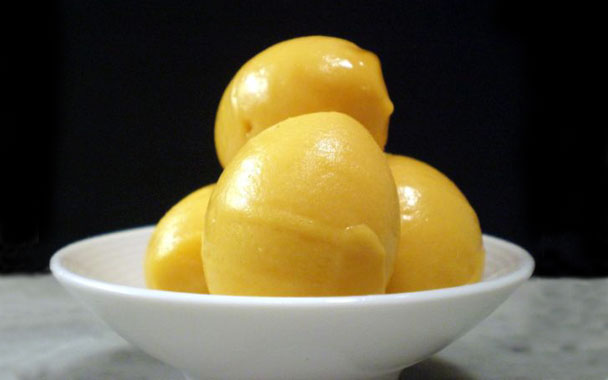Within the last decade, there has been a fair amount of press devoted to the trend of desserts that straddle the sweet-savory divide. I’m just one among dozens of pastry chefs who have been raiding the pantry on the “other” side of the kitchen for years. Though it has become fashionable, if not commonplace, to sneak salt and veggies—even bacon—into restaurant desserts, the concept isn’t exactly new. It may appear that certain ingredients have suddenly switched sides in the botanical or culinary sense, but in reality our conventional associations have more to do with culture and our particular moment in history. I’ve been looking to summer’s vegetable bounty for simple dessert ideas incorporating some not-so-common ingredients.
In contemporary American cuisine, a few vegetable-centric dessert staples—such as carrot cake, pumpkin pie, zucchini bread, and sweet-potato pie—have become woven into our collective food traditions. But the same is true of sweetened red beans in Japanese cuisine; chickpeas and dal are common in the desserts of India; and you’ll find any number of starchy roots and tubers in sweets all over South America and Asia. And though the combination may seem “edgy” today, chocolate and corn were very closely linked in Central America centuries before European explorers introduced them, separately, to their home continent. In the U.S., vegetables have also filled in for more expensive sweeteners during wartime shortages or economic depression—beets, for instance, are used to create cheap sugar; and carrots and zucchini are well known as ingredients that add a touch of sweetness, as well as moisture and bulk. Like many chefs today, I get inspiration from the past and ethnic traditions, but I also try to judge each ingredient on its own qualities in isolation, without the baggage of convention.
This consideration of ingredients can yield surprising results. For example, the signature dessert at Arpège in Paris, tomate confite farcie aux douze saveurs, highlights the natural sweetness of the tomato with a filling of fruits, nuts, and spices. From there it’s easy to imagine tiny, sugar-poached tomatoes nestled alongside summer berries in a simple tart or crumble. I find corn to be one of the most versatile sweet vegetables, holding its own in custards, cakes, sorbets, or ice creams. We featured a corn and chocolate dessert on the menu last season, but this season I’m working corn kernels into a smooth panna cotta, with a bright berry compote to offset its nutty flavor and creamy texture. As summer gives way to autumn, I’m using a variety of squashes to fill the role traditionally played by pumpkin; sweet potatoes, too, will have reached their peak in the colder months. Whenever I work with these flavorful tubers, I always roast them, to best develop their natural sugars. From there, I might fashion the resulting sweet-potato purée into a pie or cake, but my favorite vehicle for it is a light sorbet accented with vanilla.
None of those ideas strays too far from the familiar map, but we can surely dig deeper into the produce section for creative desserts. Baby eggplants are like flavor sponges; I love them blanched and then lightly candied in simple syrup, infused with a sweet, aromatic spice blend like ras el hanout. Parsnips and celery root bring a delicate depth and earthiness to custards; either one makes a great substitute for the grated carrot in that traditional cake we all know so well. Some vegetables find their perfect match when partnered with fruits: I’ve had great success with a sorbet spun from freshly juiced apples and celery stalks; crunchy candied fennel works well with poached pears, or on any dessert in need of an anise or licorice note; and when citrus season rolls around in early winter, try using sweetened avocado to soften citrus fruit’s acidic edges.
The next time you’re at the market and you bite into a ripe tomato or inhale the scent from a taut bulb of fennel, close your eyes and really focus on the sweet flavors and aromas hidden within. From there, let taste and imagination be your guide.


